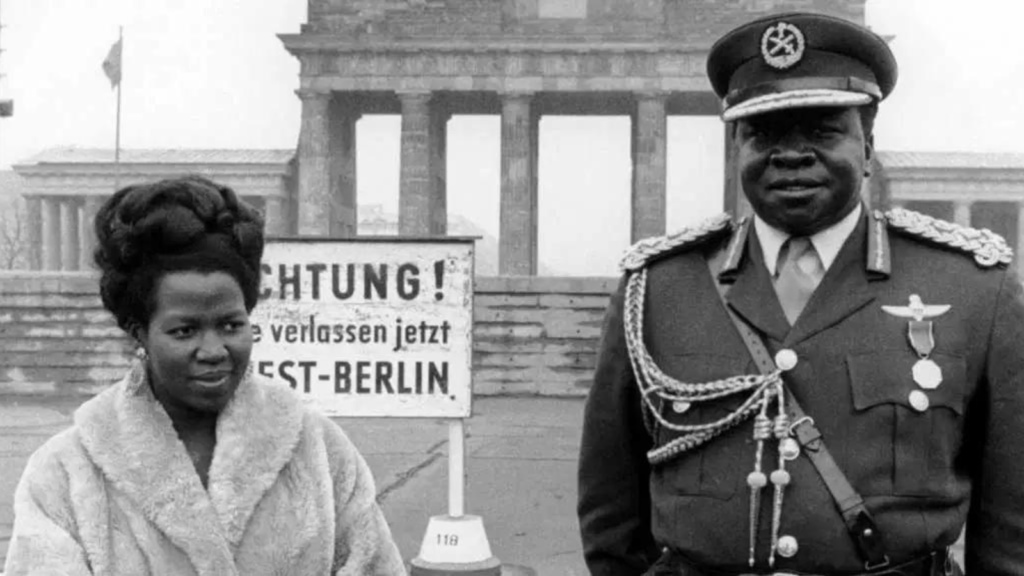The period between 1971 and 1979 in Uganda, known as the Idi Amin era, was marked by significant political turmoil, dictatorial rule, and human rights abuses.
Here’s an overview of Uganda’s constitutional and political history during this time:
Rise to Power
- Coup d’État (1971): Idi Amin, an army general, seized power from President Milton Obote on January 25, 1971. The coup was largely bloodless, and Amin initially presented himself as a leader who would restore stability and eliminate corruption.
- Consolidation of Power: Following the coup, Amin quickly moved to consolidate his power. He dismantled existing political structures, suspended the 1967 Constitution, and declared martial law, undermining democratic governance.
Governance and Policies
- Dictatorial Regime: Amin ruled through a military junta, characterized by authoritarianism and oppression. He established a one-party state, outlawing political opposition and suppressing dissent.
- Human Rights Violations: Amin’s regime is infamous for widespread human rights abuses including extrajudicial killings, torture, and forced disappearances. Estimates suggest that hundreds of thousands of people, particularly from specific ethnic groups and political opponents, were killed during his rule.
- Economic Policies: Amin implemented radical economic policies, including the nationalization of foreign-owned businesses. These policies initially promised economic independence but led to the collapse of the economy, increasing unemployment, and food shortages.
International Relations
- Foreign Policy Shifts: Amin’s foreign policy decisions, including his alignment with Libya and other Arab countries, strained Uganda’s relationships with Western nations. His public support for Palestinian groups and the declaration of himself as the “Conqueror of the British” attracted both support and condemnation.
- Exile and Refugees: Many Ugandans, especially professionals and political opponents, fled the country during Amin’s regime. This led to a brain drain that severely impacted Uganda’s economy and development.
Resistance and Decline
- Opposition Movements: Various opposition groups began to organize against Amin’s regime. This included former members of Obote’s government and other political factions. The Uganda People’s Army (UPA) and other groups launched attacks against Amin’s government.
- Military Conflicts: The government’s response to dissent was brutal, leading to increased civil unrest and resistance. By the late 1970s, Uganda was embroiled in conflict, with rebels gaining ground against Amin’s forces.
Fall from Power
- Tanzania-Uganda War (1978-1979): Tensions escalated between Uganda and Tanzania, culminating in an invasion by the Tanzanian army in 1979. Amin’s forces were ill-prepared and faced significant resistance.
- Overthrow of Amin: By April 1979, Amin was ousted from power as Tanzanian troops and Ugandan exiles marched into Kampala, effectively ending his brutal regime. Amin fled into exile, eventually settling in Saudi Arabia.
Aftermath
- Transition Period: Following Amin’s overthrow, Uganda entered a transitional government period. This was marked by power struggles and the eventual return of Milton Obote in 1980, leading to further conflicts.
- Legacy of Amin’s Rule: The Idi Amin era left a lasting impact on Uganda, including trauma from human rights abuses, economic decline, and a fractured political landscape. The memory of this period continues to influence Ugandan society and politics today.
Conclusion
The Idi Amin era was a defining period in Uganda’s history, characterized by tyranny, violence, and radical shifts in governance and policy. The legacy of his rule continues to affect Uganda’s political landscape and societal dynamics.

